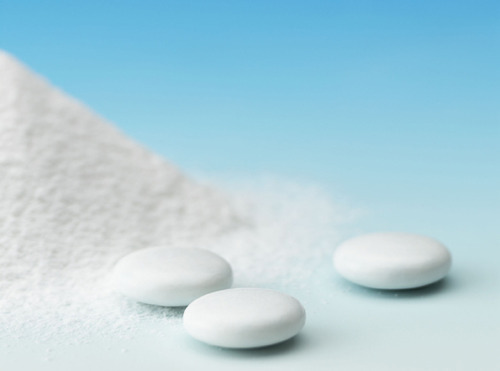
Excipients are inert substances formulated alongside the active pharmaceutical ingredient (API) in a medication. It helps in stabilization, acts as a filler or enhances solubility, increases shelf-life, facilitates better absorption of the medication, and prevents denaturation. This does away with the need for a specific substance to impart each of these properties and thus, helps reduce production costs. Excipients do not interact with the drug and help carry the active drug to the intended site in the body. They also help prevent gastric problems and damage to tender tissue by ensuring the timely release of the drug. Excipients also help provide the desired texture, color, and taste to the drug, which is especially important when developing medication for children.
Pharmaceutical excipients are broadly classified into organic and inorganic excipients. Organic excipients are natural and have minimal side-effects such as skin rashes and acidity associated with them. However, these are widely preferred over inorganic excipients that are synthetically derived. Calcium phosphate and metallic oxides are typical inorganic excipients, while cellulose, starch, sugar, and gelatin are organic excipients. Plant cellulose and dibasic calcium phosphate (fillers), fumed silica, talc (lubricants), benzoic acid and its salts (preservatives), aspartame (sweetening agent), titanium dioxide, caramel, saffron (coloring agents) are examples of various types of excipients.
On the basis of application, excipients are broadly divided into oral, topical, parenteral formulations, suppositories, and intra-muscular, among others. The most common use of excipients is in oral drugs.
According to the report titled Global Pharmaceutical Excipients Market, By Chemistry (Plants, Animals, Minerals, Synthetic Source), Functionality (Binders, Diluents, Glidents, Disintegrants), Application (Oral, Parenteral, Topical), and Geography - Trends, Analysis, and Forecast till 2024’published by Coherent Market Insights, the market for Pharmaceutical Excipients is expected to surpass US$ 6.6 Billion the end of 2024 at a CAGR of 6.9% during 2016–2024.
Changing dynamics of Pharmaceutical Excipients Market: From Developed towards Emerging Economies

The highly advanced healthcare infrastructure, the wide network of state-of-the-art laboratories, the presence of major production facilities with close proximity to market, and robust distribution channels in developed regions such as North America and Europe, in turn, make these the largest markets for pharmaceutical excipients. However, the market is now witnessing a paradigm shift, with companies facing on capitalizing on economies of scale in emerging economies such as India and China and also catering to increasing demand for drugs in the region. Supportive government policies such as Make in India initiative that provides various subsidies and benefits for production facilities in the country and easing of FDI cap in India and China, further augment the growth of the market in the region. Self-medication is a prevalent trend worldwide, which argues favorably for the growth of the pharmaceutical excipients market. However, dwindling R&D investments, stringent laws and regulations by IPEC and FDA to retain quality standards, among other factors, restrains market growth to a certain extent. Value-based assessment balancing needs of the patients and cost will go a long way to stabilize fluctuating market growth.
Dominant players in the market
BASF (Germany), Ashland Inc. (USA), Dow Chemical Company (USA), Lubrizol Corporation (USA), Colorcon Inc, Evonik Industries, Roquette (France), Archer Daniels Midland Company (USA), Associated British Foods PLC, Merck Millipore, Croda International Plc (UK) are major companies. Colorcon Inc and Dow Chemical Company have formed an alliance offering a portfolio of controlled-release excipients. Diversified product-portfolios, mergers and acquisitions, innovative product launches, aggressive sales strategies are adopted by these companies to vie against one another to retain dominance in the market.
Natural biodegradable, non-toxic excipients opening new growth avenues
The potential use of okra (ladies finger) gum, a plant grown in abundance in Nigeria and India as a binder, control-release, coating agent and bio-adhesive is gaining ground. New products in the pipeline that are based on oil-in-water emulsions in ophthalmic dosage is a recent advancement, which enhances drug solubility and stabilization efficiently with a soothing effect and minimal damage to ocular tissue.
The importance of the functionality of excipients is often underestimated. Ensuring selection of the right excipient is crucial to the medication, as inferior/unsuitable excipients can lead to undesirable outcomes like adverse reactions in patients and in extreme cases even death. Evidently, the quality and performance of excipients are critical to the success of medication and eco-friendly excipients will change the landscape of drug delivery in the future.
To know more about the latest market trends and insights, read the report titled, "GLOBAL PHARMACEUTICAL EXCIPIENTS MARKET, BY CHEMISTRY (PLANTS, ANIMALS, MINERALS, SYNTHETIC SOURCE), FUNCTIONALITY (BINDERS, DILUENTS, GLIDENTS, DISINTEGRANTS), APPLICATION (ORAL, PARENTERAL, TOPICAL), AND GEOGRAPHY - TRENDS, ANALYSIS, AND FORECAST TILL 2024", published by Coherent Market Insights. Click on the link below to access the report –
https://www.coherentmarketinsights.com/market-insight/pharmaceutical-excipients-market-124






